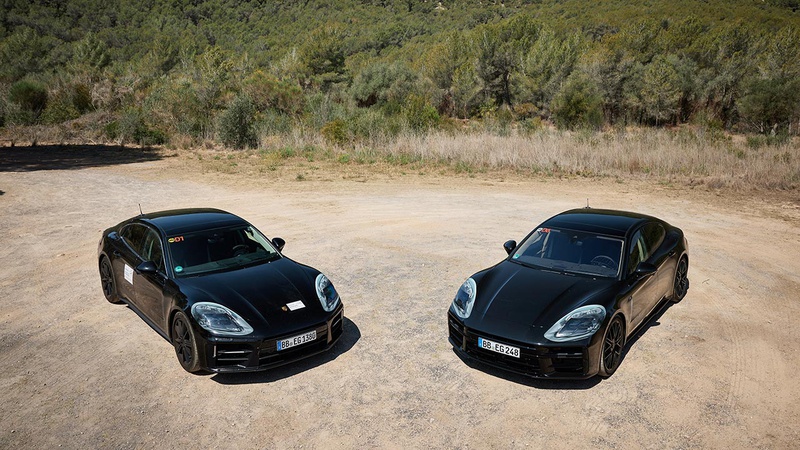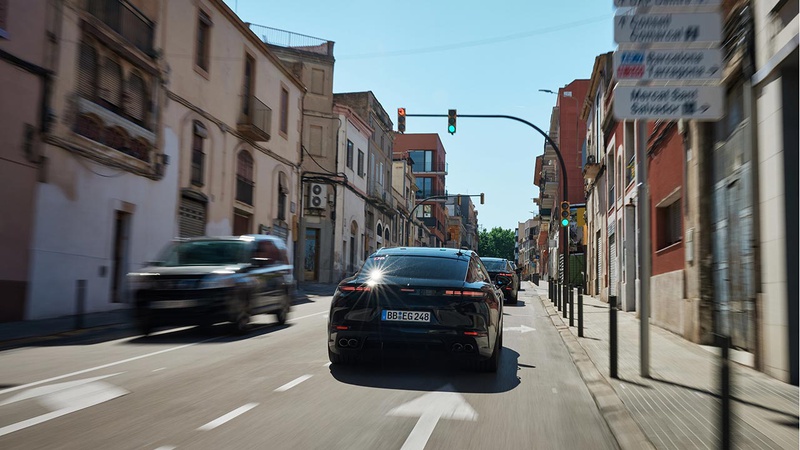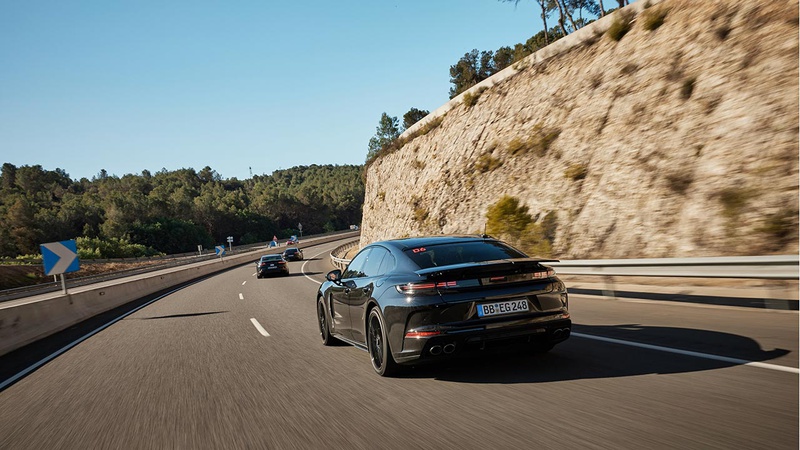Shortly before its market launch, the new Panamera is undergoing its final adjustment tests. In and around Barcelona, engineers are checking the last details and finer aspects of the new model generation. At this point in the development process, the sports sedan has already completed most of its testing: the four-door sports car has proven its qualities on four continents.
In the USA, for example, the engine's performance was tested at high altitudes with low oxygen levels, and the performance of the engine cooling and air conditioning systems was verified in extreme heat. In Scandinavia, the Panamera was driven in extremely cold conditions; in South Africa, it mastered difficult road conditions; and in Asia, the high humidity and hours of stop-and-go traffic in the megacities placed special demands on the overall package.
“We test every new vehicle intensively in order to meet our requirements and, above all, those of our customers around the world,” says head of testing Marcel Hönemann. “The benchmark is always the development goals defined in the specifications. The new Panamera has to shine here and now, especially when it comes to performance, comfort and acoustics.”







Prototype of the new Panamera, Barcelona
With the model change, the Panamera gets a new range of engines. The focus is on "sustainable drives and efficiency".
“After we have already brought three E-hybrids onto the market for the second Panamera generation, we will also be offering a fourth plug-in hybrid in the new Panamera. This is how we respond to the enormous demand from our customers. In some countries, the proportion of e-hybrids in the Panamera is almost 100 percent. The new derivative is a high-performance model that fits perfectly into the versatile line-up,” announces Dr. Thomas Friemuth, head of the Panamera series. “We are increasing the electrical performance of the Panamera in all E-Hybrid models in the area of ??driving dynamics and in the important disciplines of electric range and charging speed. In our tests, we can drive the new car up to 70 percent further purely electrically than with its predecessor.”
All E-Hybrid models of the new Panamera are based on a new, more powerful electric motor, which is now fully integrated into the transmission housing of the new dual clutch transmission. At a lower weight, it offers more drive and recuperation power than its predecessor. It draws power from a high-voltage battery whose capacity has been increased from 18.1 kWh to 25.9 kWh. In fact, that's even more than the first-generation all-electric Nissan Leaf had when it was launched in 2011. An onboard charger with a charging power of 11 kW shortens the charging time despite the larger energy content.
Meanwhile, the combustion engines also promote efficiency and performance. All powertrains in the new Panamera are prepared for future emissions standards.
In addition to the revised engine line-up, the new Panamera features other new additions: It debuts an optional chassis with active damper control and a wide range of extra functions. "With the active suspension, we are setting new standards. We felt this clearly on every test mile - extremely comfortable on the cobblestones of Barcelona's harbor, but at the same time highly dynamic and agile on winding country roads in the hinterland. An incomparable range," says Thomas Friemuth. The new Panamera is equipped as standard with a semi-active chassis with new two-valve shock absorbers that can adjust compression and rebound independently of each other.
Following its official debut in the UAE at the end of November, the next-generation Panamera is expected to be launched sometime in 2024.
Source: Porsche
.jpg)

